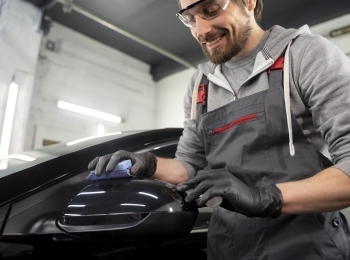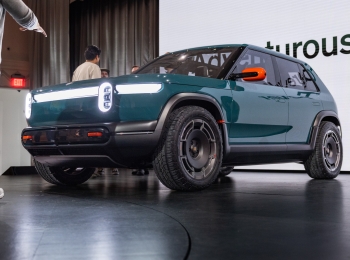Honda is officially back in Formula 1 for the long haul, and this time, the legendary Japanese automaker is teaming up with Aston Martin. The announcement, made during the Mexico City Grand Prix, marks a bold new era for both brands. Starting with the 2026 F1 season, Honda will become the exclusive power unit supplier for the Aston Martin Formula 1 Team.
Honda’s leadership, including CEO Toshihiro Mibe, Honda Racing Corporation (HRC) CEO Koji Watanabe, and Honda USA CEO Kazuhiro Takizawa, made it clear that Formula 1, alongside MotoGP, will be the company’s top racing focus moving forward.
Two Rivals, One Team
While it’s not unusual for competing car manufacturers to collaborate in Formula 1, this partnership stands out. Currently, only three companies, Honda, Mercedes-Benz, and Ferrari, supply engines to all 20 cars on the grid. However, Honda’s exclusive partnership with Aston Martin is unique because both companies build and sell their own cars.
Still, Honda executives insist that there’s no real conflict of interest. “Honda and Aston Martin are not competitors in the market,” explained Takizawa. Instead, both sides see a rare opportunity for mutual growth, not just on the track, but in engineering, design, and even marketing.
“Aston Martin is an incredibly valuable brand,” Mibe said. “We see many possibilities for collaboration beyond Formula 1.” Check more photos


Growing Relationship Beyond the Racetrack
Honda CEO Toshihiro Mibe confirmed that discussions are already underway with Aston Martin Executive Chairman Lawrence Stroll to expand the partnership even further. However, Mibe noted that the first step is to prove Honda’s performance on the track once the 2026 season begins.
Mibe expressed strong confidence in Aston Martin’s F1 team, pointing to the recent hiring of legendary aerodynamic engineer Adrian Newey, formerly of Red Bull Racing. “Aston Martin is a team on the rise,” Mibe said. “We want to see their drivers on the podium, and Honda will do everything possible to make that happen.”
He also confirmed that he plans to personally attend the 2026 season opener in Australia to inspect the new Honda-powered cars firsthand.
Interestingly, while none of the executives would confirm it, there was speculation that some Aston Martin customers might also become future HondaJet clients, a crossover of luxury lifestyle and technology between the two brands.
The Tech Advantage: From Track to Road
Honda’s decision to remain in Formula 1 comes after a brief consideration to exit the sport entirely a few years ago. The turning point came with the new 2026 F1 regulations, which require a much greater use of electric power. Under the new rules, the hybrid systems will provide nearly 50% of total engine output, a massive leap from just over 20% today.
This new direction gives Honda an incredible opportunity to test and develop advanced battery, inverter, cooling, and electric motor technologies that could eventually make their way into future Honda road cars and SUVs.
However, as HRC’s senior managing director, Ikuo Takeishi explained, transferring F1 technology to consumer vehicles isn’t a simple copy-paste process. “The motors and batteries used in racing are not built for daily driving,” he said. “But the underlying principles ‘ improving efficiency, reducing weight, and boosting energy density ‘ are absolutely useful for our production cars.”
Honda also plans to rotate engineers between its racing and consumer divisions to ensure that the lessons learned on the F1 track directly benefit upcoming hybrid and electric vehicles.
Winning on Track, Growing on the Streets
Another big part of Honda’s plan involves expanding its performance parts business. HRC’s CEO Koji Watanabe explained that while racing is expensive, new financial regulations, including the 2026 F1 cost cap, make participation more sustainable.
To help fund the program, HRC will increase the number of Honda-approved aftermarket performance parts available for cars, motorcycles, and SUVs. The idea is simple: success in Formula 1 will inspire customers to enhance their vehicles with official performance upgrades, all while keeping their warranties intact.
“It’s good business,” said Watanabe. “Winning races motivates owners, and that enthusiasm helps fund innovation.”
Focusing on the Pinnacle of Motorsport
When asked about Honda’s involvement in other racing series, Watanabe confirmed that Formula 1 and MotoGP will remain the brand’s top priorities. Once the company achieves success in these premier competitions, it will evaluate participation in other categories such as Le Mans.
This doesn’t mean Honda will completely abandon regional series like IndyCar or IMSA, but decisions about those programs will be left to regional offices. A final decision on IndyCar participation is expected soon, while Honda’s luxury division, Acura, will continue racing in IMSA’s GTP class for the 2026 season.
The Road Ahead
With Aston Martin’s growing momentum and Honda’s engineering expertise, this partnership could reshape the future of Formula 1. More importantly, the collaboration could spark breakthroughs that reach far beyond the racetrack, from next-generation hybrid engines to advanced EV technologies.
For Honda, it’s more than just racing. It’s about proving that the lessons learned at 200 mph can lead to smarter, faster, and more efficient vehicles for everyone.
FAQs
Why is Honda returning to Formula 1 again?
Honda decided to come back to F1 because of the new 2026 rules. These new rules focus more on electric power and hybrid engines, which match Honda’s goals for future electric cars. Racing helps them test new technology that they can later use in their road cars.
What makes the 2026 F1 season so important?
The 2026 season will bring big changes to Formula 1. The new engines will use about 50% electric power, making the cars more eco-friendly. It’s a big step for all car makers who want to move toward hybrid and electric vehicles.
How will F1 technology help make better road cars?
The parts used in race cars, like electric motors, batteries, and cooling systems, are designed for high performance. Even though regular cars can’t use the exact same parts, the ideas and designs can be used to make everyday vehicles more efficient and powerful.
What is Honda’s role with Aston Martin’s F1 team?
Honda will supply the engines, also called “power units,” for the team starting in 2026. They will work closely with the team’s engineers to build a fast, reliable, and energy-efficient hybrid system for the race cars.
Why do car companies spend so much on racing?
Racing helps car makers test new technology in extreme conditions. It also boosts their image ‘ when they win races, people trust their cars more. The lessons learned on the track can improve future vehicles.
What does the F1 cost cap mean?
The cost cap limits how much teams can spend each year. This rule helps make racing fairer and stops companies from overspending. It also allows brands like Honda to stay in F1 without hurting their budgets for new car development.
Will the new F1 hybrid engines make road cars faster?
Not directly, but the same ideas will help make future cars lighter, stronger, and more fuel-efficient. Over time, racing technology leads to better performance in everyday cars and SUVs.
Is Honda still racing in other motorsports?
Yes, but they are focusing mainly on Formula 1 and MotoGP for now. Other series, like IndyCar and IMSA, will depend on their regional teams and future plans.
What kind of new car parts will Honda make because of F1?
Honda’s racing division plans to offer more performance parts for cars, SUVs, and motorcycles. These will be official upgrades that improve speed or handling without voiding the warranty.
How could this partnership change the future of racing?
This partnership could push F1 toward greener, more powerful hybrid technology. It shows how teamwork between automakers can speed up progress, not just in racing, but in the cars people drive every day.












Leave a Reply